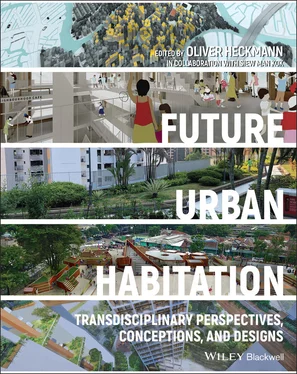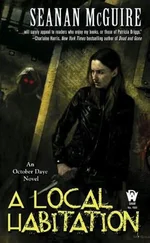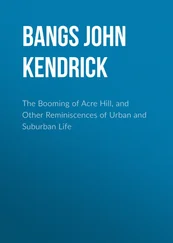1 ...8 9 10 12 13 14 ...28 1 Armborst, T., D'Oca, D., and Theodore, G., written and edited with Gold, R. (2017). ‘The Arsenal of Exclusion & Inclusion’, Actar.
2 Avermaete, T., Schmidt‐Colinet, L., and Herold, D. (ed.) (2018). Living Lab: Constructing the Commons. Institute for Art and Architecture, Academy of Fine Arts Vienna Vienna. https://issuu.com/ika‐vienna/docs/livinglab_constructing_the_commons(accessed 8 September 2020).
3 Barr, C. and Malik, Sh. (2016). Revealed: the 30‐year economic betrayal dragging down Generation Y's income. The Guardian, 7 March. www.theguardian.com/world/2016/mar/07/revealed‐30‐year‐economic‐betrayal‐dragging‐down‐generation‐y‐income(accessed 4 April 2020).
4 Cross, N. (1982). Designerly ways of knowing. Design Studies 3 (4): 221–227.
5 European Commission (2011). Roadmap to a Resource Efficient Europe (COM(2011) 571). Brussels: European Commission.
6 Klein, M. (2012). Models and Solutions, Life and Practices in Social Housing in Vienna. dérive 46.
7 Latour, B. (2004). Why has critique run out of steam? From matters of fact to matters of concern. Critical Inquiry 30: 225–248.
8 Lefebvre, H., Kofman, E., and Lebas, E. (1968/1995). The Right to the City (Le Droit à la ville, 1968). In: Writings on Cities (ed. Henri Lefebvre, E. Kofman, and E. Lebas. Wiley‐Blackwell.
9 Lesthaeghe, R. (2010). The unfolding story of the second demographic transition. Population and Development Review 36 (2): 211–251.
10 OECD. (2011). Doing Better for Families. www.oecd.org/social/family/doingbetter(accessed 14 June 2020).
11 OECD. (2019a). HC1.2.HOUSING COSTS OVER INCOME, Social Policy Division, Directorate of Employment, Labour and Social Affairs www.oecd.org/els/family/HC1‐2‐Housing‐costs‐over‐income.pdf(accessed 13 March 2020).
12 OECD. (2019b). OECD Employment Outlook. www.oecd‐ilibrary.org/employment/oecd‐employment‐outlook_19991266(accessed 14 June 2020).
13 Rolnik, R. (2019). Urban Warfare: Housing Under the Empire of Finance. Verso Books.
14 Sassen, S. (2014). Expulsions: Brutality and Complexity in the Global Economy. Cambridge, MA: Harvard University Press.
15 Schneider, T, Till, J. (2014). Spatial Agency. www.spatialagency.net(accessed 1 November 2020).
16 Simon, H. (1969). The Sciences of the Artificial. MIT Press.
17 UN Department of Economic and Social Affairs Population Division. (2019). World Urbanization Prospects The 2018 Revision. New York: United Nations. https://population.un.org/wup/Publications/Files/WUP2018‐Report.pdf(accessed 8 March 2021).
18 UNEP. (2015). Sustainable Buildings and Climate Initiative. www.unep.org/sbci/AboutSBCI/Background.asp.
Section 1 Inclusive Urbanism
Oliver Heckmann
Urban Housing Lab, Berlin, Germany
The words ‘inclusive urbanism’ are used here to cover the complex mechanisms of inclusion and exclusion in urban settings and its habitats. The authors in this section discuss diverse perspectives on how future urban habitats could be conceptualized to cater for an affordable and sustainable collective living and also foster the inclusion and participation of vulnerable groups in urban societies as equal players, anticipating that the mechanisms of exclusion are ever more complex.
Referring to the idea of ‘designing coexistence’, authors will also illustrate the aspects and means of ‘enabling’ and ‘empowering’ urban communities – with an understanding that the ‘included’ are to be considered as proactive, contributing stakeholders. Deciphering and anticipating both their capabilities and constraints and pursuing their participation would inform policies and socio‐spatial strategies that could act as catalysts for inclusive societies.
It is interesting to see the manifold contexts of using the word ‘inclusion’ and speculate about their common trait. The practices of inclusivity are mainly understood as mechanisms to counter the threats of ‘exclusion’ – by income, physical, or mental conditions, race, gender, class, age, sexual orientation, or others. But one could argue that inclusivity is to a certain extent in general a key characteristic and potential of cities, as a condition of dynamic and complex encounters of multiple otherness, a social, cultural, and economic market place, in which mutually beneficial performance is one of the very potential cores of urbanity. Hannah Arendt (1958) understands the condition of otherness as an essential condition of (urban) identity: ‘The presence of others who see what we see and hear what we hear assures us of the reality of the world and ourselves’. Netto (2018) points at the capacities of urbanity to generate an experience of ‘difference without exclusion’. He argues that ‘a fully‐fledged urbanity would involve a sense of a permeable social world, that can bring the socially different together in places of overlapping otherness’, with the potential to – referring to Young – transcend ‘the fear of making permeable the categorical border between oneself and the others’ (Young and Allen 2011). Edward Glaeser sees a general capacity in cities to bring people together, enabling to connect, to inspire and influence each other, and to exchange ideas (Glaeser 2011).
However, one must not forget that in these idealized views of togetherness as an ostensible win‐win scenario the crucial balancing of ownership, power, and influence that would be at the core of all inclusivity and opportunities for equal participation in cities has not necessarily been taken into account. For example, Glaeser also promotes deregulation of land use as essential prerequisite for affordable housing (Glaeser 2013), thus illustrating still‐predominant neoliberal paradigms that only an unconstrained free market can cater urban development and a ‘trickle‐down urbanism’ (Tabb 2014) promised to be beneficial for all. But various authors (Madden and Marcuse 2016; Rolnik 2019) demonstrate that such aspirations and successful lobbying for deregulation, persuasion of international capital, and tax incentives for the affluent with simultaneous austerity policies (to mention a few) are rooted in exclusionary and competitive practices that have in the end often led to the complete opposite: expanding segregation and exclusion of growing groups in urban societies from the opportunities that cities could offer.
Inclusion and exclusion can thus be understood as two inherent antipodes of urbanity. Louis Wirth sees in ‘Urbanism as a Way of Life’ two conflicting mechanisms similar to exclusion and inclusion at play – either ‘forces of segregation’ or ‘melting pot effects’ (Wirth 1938), noting though that the density of urban life can create neighbourhoods with the distinctive characteristics of traditional communities. Saskia Sassen (2017) argues that cities – with their ambiguity to be ‘complex, difficult to control and incomplete systems’ – have long been spaces empowering those without power to make claims, to develop a culture and an economy in their urban neighbourhoods, as ‘the spaces of the modest’. Cities succeeded here to enable ‘a bazaar culture’ as a territory that was inclusive by nature, where members of different backgrounds could trade with each other and still engage in their own cultures and religion – combined as a decisive feature of urbanity. But these centuries‐old urban capabilities are now being undermined by the extreme repositioning of cities as valuable commodities, that ‘thin out the texture and scale of spaces’ previously accessible to the collective and that threatens the capacity of the working and middle classes to find affordable housing – an indispensable foundation for their capability to participate and pursue social and economic initiatives. To describe these phenomena, Saskia Sassen (2014) uses instead of ‘exclusion’ the more compelling term ‘expulsion’ – from social security, housing, local communities, employment, ecological sustainability, and others – to describe in general global mechanisms that go far beyond the reach of local or national governments.
Читать дальше












